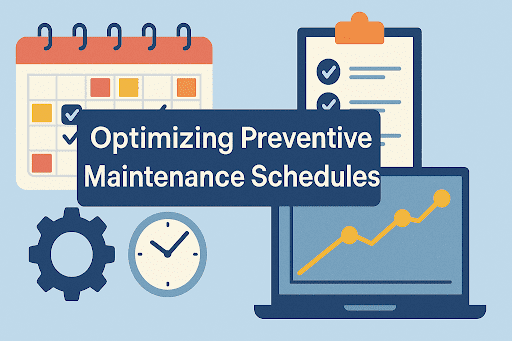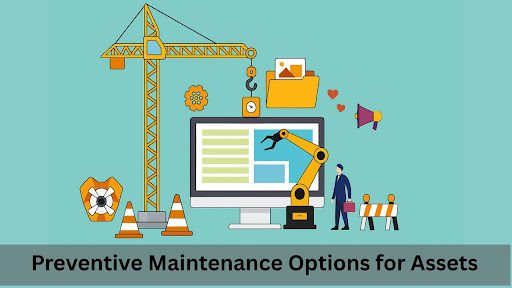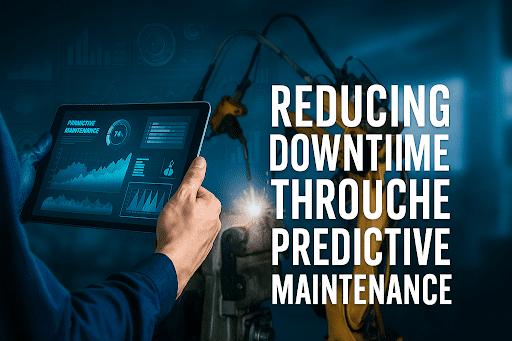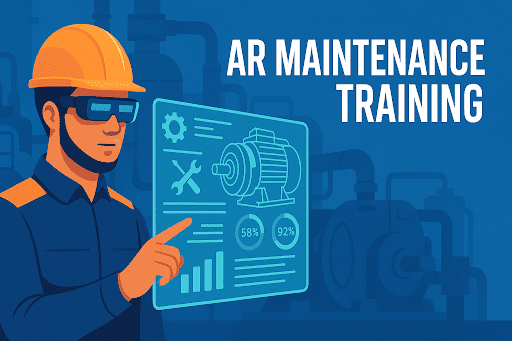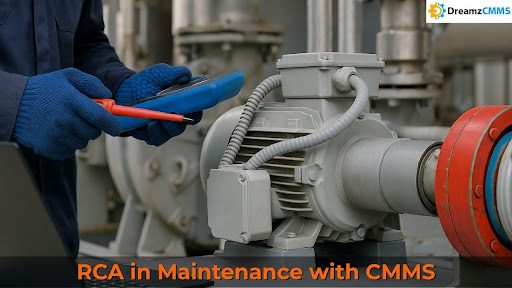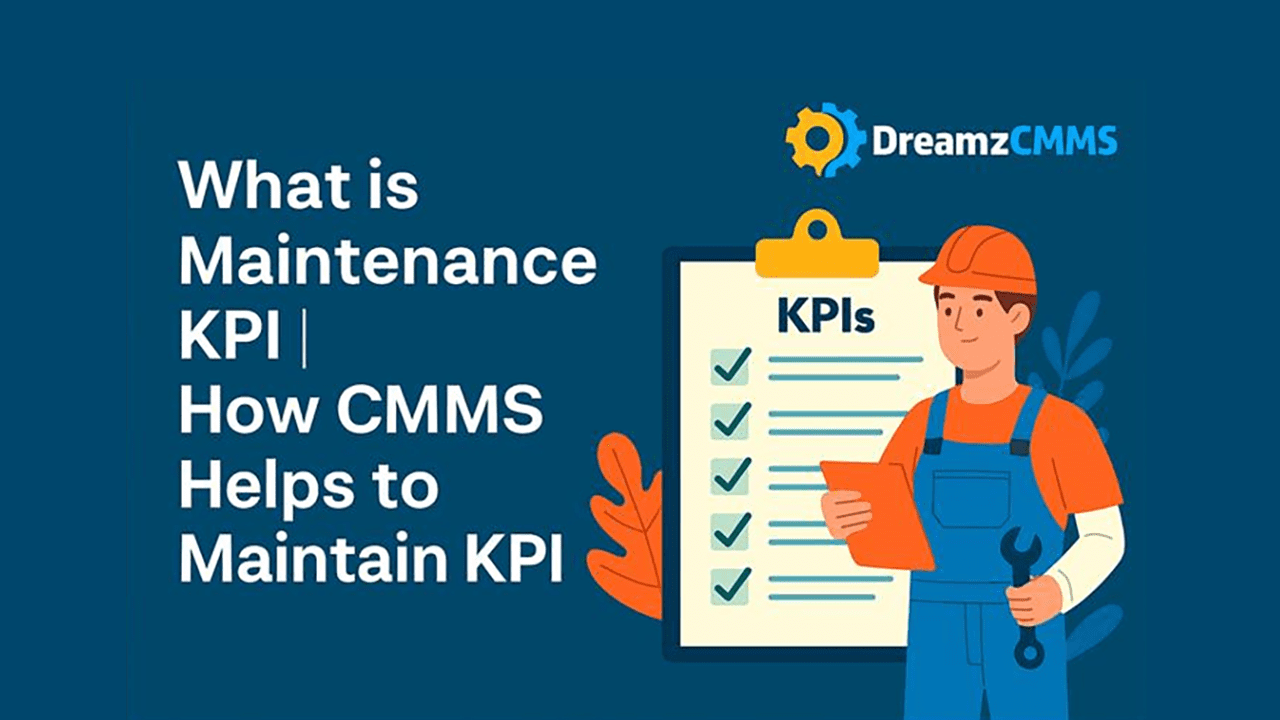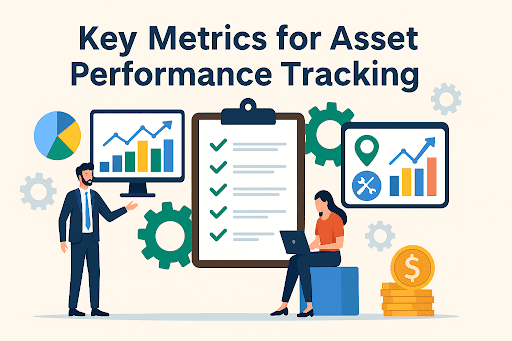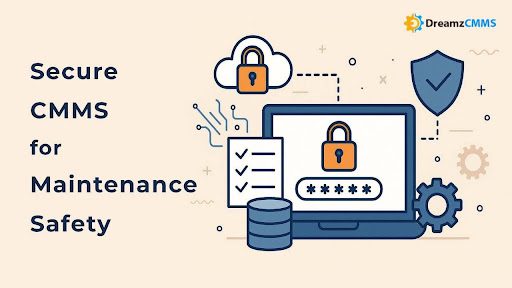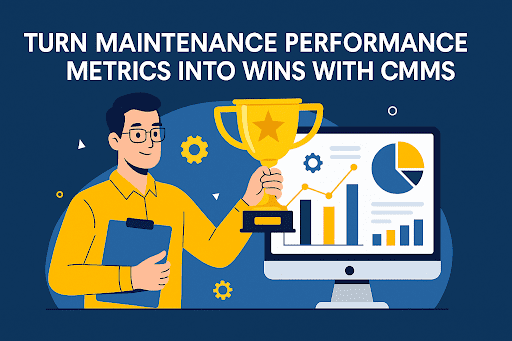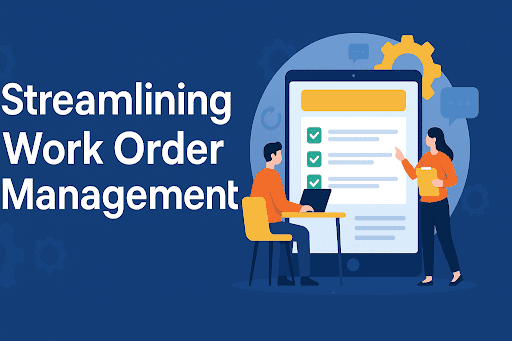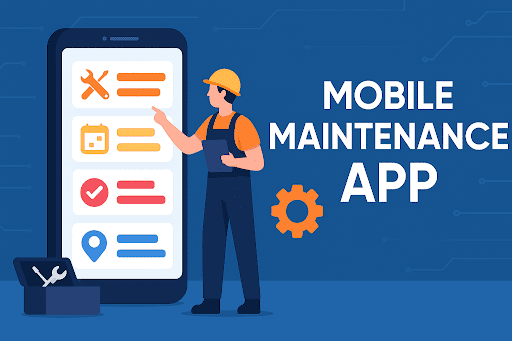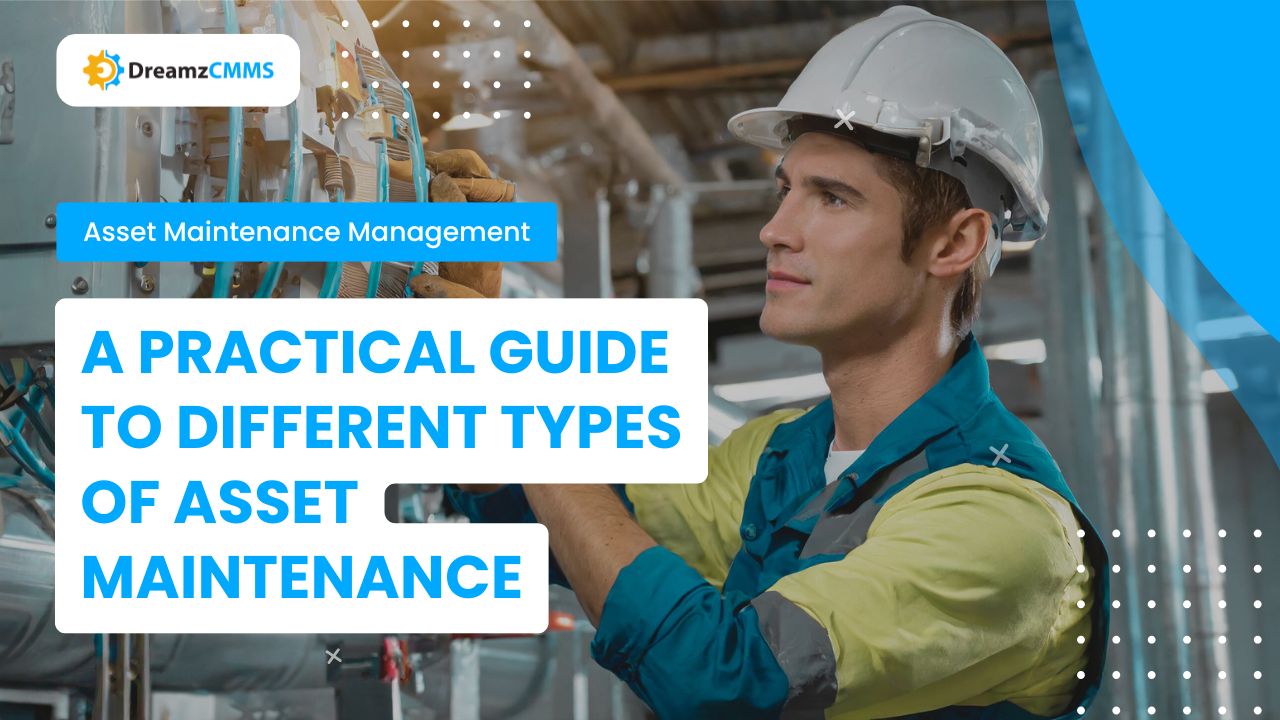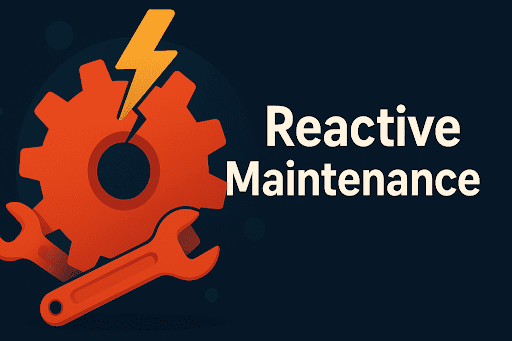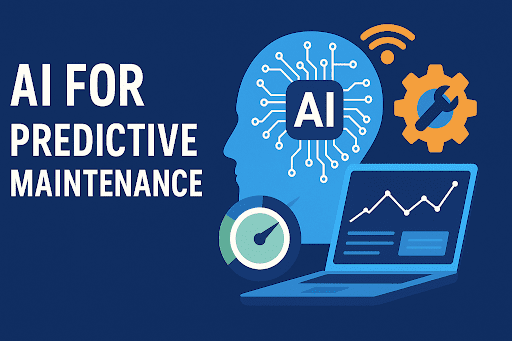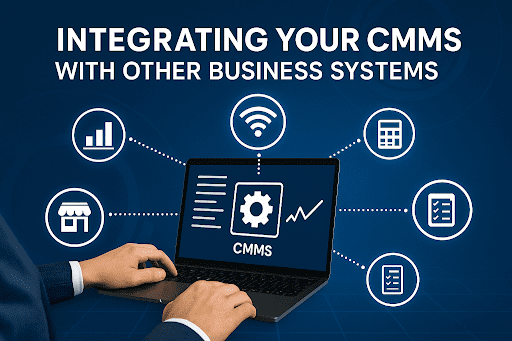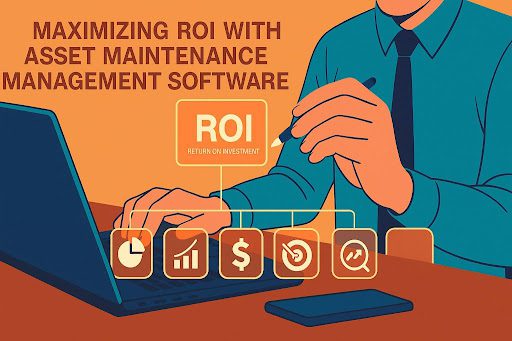 BACK TO Blog
BACK TO Blog
Asset Rental Management
Asset Maintenance
Modern industrial businesses must continually strive for reduced downtime while enhancing asset performance and managing operational expenses. Organizations now need more than traditional maintenance methods which include reactive fixes and routine preventive maintenance. Machine learning maintenance has emerged as a transformative approach that utilizes AI to create predictive maintenance procedures
- June 20, 2025
- DreamzCMMS Team
- 10 minutes read

- June 20, 2025
- DreamzCMMS Team
- 10 minutes read
Modern industrial businesses must continually strive for reduced downtime while enhancing asset performance and managing operational expenses.
Organizations now need more than traditional maintenance methods which include reactive fixes and routine preventive maintenance. Machine learning maintenance has emerged as a transformative approach that utilizes AI to create predictive maintenance procedures supported by data-driven analytics.
This blog describes the impact of machine learning on maintenance operations, its operational principles, benefits, practical applications, and implementation guidance. Machine learning technology for equipment failure prediction transforms maintenance operations for manufacturing plants and facilities as well as critical infrastructure management.
Explore Asset Maintenance Management Software
Get complete visibility into asset conditions and automate work order generation with ease.
AI-powered tools help organizations achieve maximum uptime and cost savings through optimized maintenance performance.
Asset Maintenance Management Software
Why Traditional Maintenance Methods Are Failing
Throughout history organizations have employed three fundamental maintenance strategies.
- Reactive Maintenance – Reactive Maintenance requires waiting until equipment failures occur before starting repair operations.
- Preventive Maintenance – Preventive Maintenance involves performing maintenance procedures at scheduled intervals without considering the current state of assets.
- Predictive Maintenance – Using limited sensor data to predict failure trends.
These approaches serve their purpose yet produce several operational shortcomings.
- Unexpected Downtime: Equipment breakdowns occur without warning because regular checks cannot prevent such failures.
- Over-Maintenance: Fixed schedules don’t always align with actual wear and tear.
- High Operational Costs: Labor, parts, and energy use can be unnecessarily high.
- Limited Visibility: Managers often operate with incomplete data.
The solution? Real-time asset condition monitoring through predictive maintenance with machine learning capabilities enables dynamic asset condition adaptation.
What Is Machine Learning Maintenance?
Through AI algorithms machine learning maintenance analyzes historical and real-time data to discover patterns which help forecast equipment breakdowns while scheduling automatic maintenance tasks. These models gain better accuracy as they process new data points.
AI-powered maintenance systems surpass traditional rule-based systems because they provide flexible automation together with exactness. The system draws knowledge from operational irregularities as well as equipment usage patterns and environmental variables and technician inputs.
Some commonly used models include:
- Regression Models – Predict remaining useful life (RUL) of equipment.
- The classification models group assets into three categories: normal condition and two warning levels and critical level.
- The anomaly detection system flags performance patterns that differ from expected behaviors.
- Reinforcement Learning – Improve maintenance schedules based on reward feedback loops.
The system enables maintenance optimization through AI-based analytics which enables organizations to take action based on data-driven insights rather than rely on assumptions.
Data Sources Feeding the Machine Learning Models
To deliver accurate predictions, machine learning systems require robust data. Key sources include:
| Data Source | Examples | Role in ML |
| Sensor Data | Vibration, temperature, noise, pressure | Enables condition monitoring with machine learning |
| CMMS Logs | Work orders, maintenance history, technician notes | Supplies failure patterns and repair timelines |
| Production Data | Runtime, loads, speed, cycle counts | Helps link performance to operational conditions |
| Environmental Data | Humidity, temperature, air quality | Accounts for external stressors |
| Inventory and ERP Systems | Spare parts, procurement delays | Aids in maintenance scheduling with machine learning |
These datasets enable data-driven maintenance strategies that are not only predictive but also prescriptive. Our blog article presents key performance indicators which serve as benchmarks for success during asset performance tracking: Key Metrics for Asset Performance Tracking.
Predictive vs. Prescriptive Maintenance
The digital maintenance transformation for companies usually starts with predictive maintenance because it predicts equipment failure through sensor data analysis and historical pattern analysis. Predictive analytics delivers better results than time-based and reactive approaches yet stops at forecasting predictions.
- Predictive Maintenance: “This motor is likely to fail in 50 hours.”
Maintenance teams receive replacement planning insights but the system fails to recommend when to perform the action and how to do it.
The process of prescriptive maintenance extends past basic forecasting capabilities. The system employs complex algorithms with AI functionality to produce recommended solutions which consider various elements such as expense and threat levels together with available resources and operational effects.
- Prescriptive Maintenance: The prescriptive maintenance system demands motor replacement during scheduled downtime on Friday to prevent production stoppages and avoid extra labor costs.
Through this approach organizations can transform maintenance planning into strategic operations by providing intelligent maintenance analytics that optimize efficiency and minimize disruptions and achieve business objectives. Machine learning maintenance enables organizations to achieve its complete benefits through the switch from predictive to prescriptive strategies which results in profitable proactive operations. Machine Learning Maintenance brings the following major benefits to operations.
Organizations achieve their complete machine learning maintenance potential by moving from predictive to prescriptive strategies which enables proactive and profitable operations.
Benefits of Machine Learning Maintenance
The most significant advantages of implementing ML-based strategies include the following:
1. Increased Uptime
Through smart maintenance prediction tools assets receive maintenance before breakdowns which avoids unplanned shutdowns.
2. Lower Maintenance Costs
Businesses reduce their maintenance costs through eliminating scheduled services and emergency maintenance procedures.
3. Improved Asset Lifespan
The implementation of real-time asset behavior analysis enables targeted interventions that lengthen equipment lifespan. Our Best Practices for Asset Lifecycle Management guide shows how to enhance asset value.
4. Leaner Inventory Management
Businesses that make accurate failure predictions can decrease their spare parts stock and implement just-in-time procurement systems.
5. Higher Workplace Safety
Failures can be catastrophic. The system alerts about risky situations which prevents their escalation.
6. Real-Time Decision-Making
Teams receive instant ML maintenance solutions that enable them to make well-informed decisions under rapidly evolving circumstances.
7. Competitive Advantage
The implementation of AI-driven asset performance management by early adopters provides operational superiority through reduced costs and improved equipment reliability. ML integration with Facility Management Software enables intelligent performance control of HVAC systems and lighting and utility systems in facilities.
Use Cases and Industry Applications
The limitations of machine learning maintenance research have ended since it is now deployed in operational environments. The essential part of industrial machine learning applications now exists across numerous different business sectors.
Manufacturing
- The analysis of motors and pumps and CNC machines uses predictive analytics methods.
- Automated work order creation occurs through the use of ML-based predictive maintenance software.
Oil & Gas
- Well monitoring operates in real-time.
- The detection of leaks becomes possible through the implementation of AI maintenance systems.
Transportation
- The prediction of railway wheel and brake wear is a key application of this system.
- The analysis of aircraft engines serves as a vital application.
Facilities Management
- The forecasting of HVAC performance falls under this category.
- Elevator maintenance optimization
Field Services
- Monitoring tool/equipment condition in real time.
- The Field Service Management Software enhances technician dispatch operations.
Sales and Asset Rental Operations
- The monitoring system tracks how long assets remain operational and how often they need repairs.
- The field representatives use Field Sales Software to align product demonstrations with maintenance-ready assets.
These deployments show how machine learning CMMS integration provides flexible and profitable solutions.
How to Implement Machine Learning in Maintenance
The success of machine learning maintenance depends on proper execution methods. Here's a step-by-step guide:
1. Set Clear Objectives
Establish your desired outcomes that include minimizing downtime together with cost reduction and extending asset longevity.
2. Conduct a Data Audit
Your team needs to identify existing data sources together with empty areas in the database. Evaluate the extent of sensor network coverage together with the overall quality of CMMS data.
3. Choose the Right CMMS Platform
When selecting a platform choose one that provides built-in machine learning capabilities for CMMS integration. Choose a system that scales and supports open APIs.
4. Build or Adopt ML Models
You should either work with a vendor who provides pre-trained models or develop custom solutions with a data science team based on your organization's resources.
5. Pilot the Program
The program should begin with a minimal asset set or production section. Validate results and fine-tune the model.
6. Automate Maintenance Triggers
The scheduling system should integrate predictive outputs to automatically create work orders.
7. Train Your Team
All stakeholders including technicians and maintenance managers and IT personnel must participate in training to achieve proper alignment and implementation.
The structured approach leads to a successful and efficient transition of maintenance management through ML implementation.
Your business requires adaptable solutions which address particular industry requirements. Our Customization for Enterprise Clients approach should be examined.
Real-World Case Studies
Case 1: Automotive Parts Manufacturer
Through predictive maintenance applications supported by machine learning the company decreased unplanned machine stoppages by 45%. Through vibration and temperature sensors the motor conditions received ongoing information that allowed for specific maintenance interventions.
Case 2: Global Chemical Corporation
The organization achieved annual savings of more than $2.5 million through energy-efficient heat exchanger cleaning schedules that were guided by real-time condition monitoring from their AI-based maintenance optimization.
Case 3: National Rail Network
Through smart maintenance prediction tools the rail operator reached 98% accuracy in detecting wheel and axle damage before incidents occurred thus enhancing public safety and minimizing service delays.
These outcomes validate the business advantages of implementing ML-based predictive maintenance software.
Common Challenges and Their Solutions
Challenge 1: Poor Data Quality
Solution: Standardizing data formats alongside sensor calibration and maintaining consistent asset tagging in CMMS represents the solution.
Challenge 2: Cultural Resistance
Solution: The solution requires maintenance staff participation from the beginning of the process and proves return on investment through pilot projects while providing training to staff.
Challenge 3: Integration Complexity
Solution: Choose solutions that provide pre-configured integrations with your current system stack.
Challenge 4: Cost Concerns
Solution: The first step should involve launching the program with essential assets or production lines to establish value before expansion. Scale gradually.
Challenge 5: Skill Gaps
Solution: The solution includes working with vendors who provide ML capabilities or conducting team training on AI fundamentals.
The correct implementation strategy enables organizations to transform obstacles into opportunities for expansion.
Future of Machine Learning in Maintenance
The upcoming development of machine learning maintenance technology will introduce substantial new innovations.
- Edge AI Deployment: The combination of sensors with localized ML algorithms will produce quicker response times.
- Digital Twins: The use of ML enables virtual asset replicas to perform scenario simulations for enhanced planning activities.
- Generative AI in Maintenance Manuals: The AI system will extract important equipment documentation information to generate real-time repair advice.
- Carbon-Efficient Maintenance:ML will also consider sustainability KPIs, making maintenance smarter and greener.
- Cloud-Powered ML Ecosystems: Industrial machine learning applications will reach more mid-size enterprises because they implement cloud-first platforms.
Staying informed about current trends maintains your business position as a leader in asset management innovation.
Conclusion
The need to adopt machine learning maintenance has evolved from being optional to becoming essential because each minute of downtime results in revenue loss. The AI-driven maintenance solution provides predictive breakdown alerts while simultaneously helping organizations optimize their maintenance strategies regarding timing and execution methods.
Every industrial sector is transitioning to intelligent operations through predictive maintenance powered by machine learning and AI-driven asset performance management. Companies should take action now because strategic alignment between technology and strategy will produce cost reductions and enhanced safety alongside sustainable competitive advantages.
Your organization needs to take action at this moment because you hold the position of facility manager or plant director or maintenance lead. A future-ready maintenance program requires your team to receive appropriate tools and data alongside AI capabilities.
Experience the Power of Smart Maintenance
Discover how DreamzCMMS can help you streamline operations with intelligent, predictive maintenance tools.
Get hands-on access to features that reduce downtime, improve asset performance, and lower costs.
Ready for More?
Talk to one of our CMMS experts and see how DreamzCMMS can simplify your maintenance operations.
Book a free consultation
